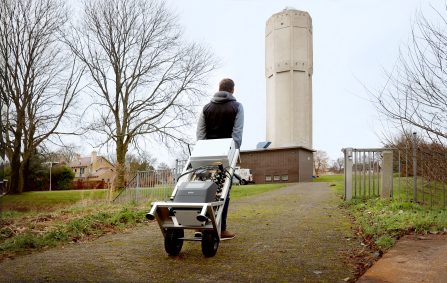Ensuring consumer safety and regulatory compliance requires monitoring contaminants in (agricultural) products. On-the-go analysis techniques, especially for assessing pesticide residues, are crucial. Our research meets this demand by developing two innovative methodologies tailored for mobile analysis, utilizing lateral flow immunoassays (LFIAs). LFIAs, akin to those used in self-tests for COVID-19, are rapid diagnostic, cost-effective and versatile tests using antibodies for on-site detection a targeted substance in a sample.
Firstly, we introduce a high-sensitivity, semi-quantitative LFIA optimized for detecting sulfoxaflor in flowers. Sulfoxaflor, a sulfoximine insecticide, has raised environmental concerns, particularly regarding pollinator safety, leading to its prohibition in the EU in 2022. With a limit of detection (LOD) of 4 ppb, this LFIA offers reliable screening capabilities. The method's extraction simplicity and proven performance by analyzing flowers from the Dutch market make it ideal for widespread use, especially in scenarios where mobile testing is crucial.
Expanding on the concept of mobile analysis, we present a novel approach that integrates LFIA with on-site sampling using modified dried blood spot (DBS) cards. We developed the SmartCard, a 3D-printed cassette that securely stores sample extracts on Dried Extract Spots (DExS) cards (a custom-made variation of the DBS). This approach not only enhances workflow efficiency but also incorporates immediate LFIA screening for contamination levels, enabling real-time assessment capabilities and streamlining transportation to laboratories. This method, tested for detecting the pesticide fipronil in ornamental flowers and poultry farms, allows simplified on-syringe extraction, direct LFIA screening of fipronil with an LOD of 10 ppb, and easy extract storage and transportation.
By combining these methodologies, we address the urgent need for precise, on-the-go assessment of contaminant presence. These advancements not only improve detection methodologies for specific compounds but also lay the groundwork for broader applications in mobile contaminant monitoring.
Speaker: Ariadni Geballa-Koukoula, Vrije Universiteit Amsterdam
Please note that this lecture is in English

